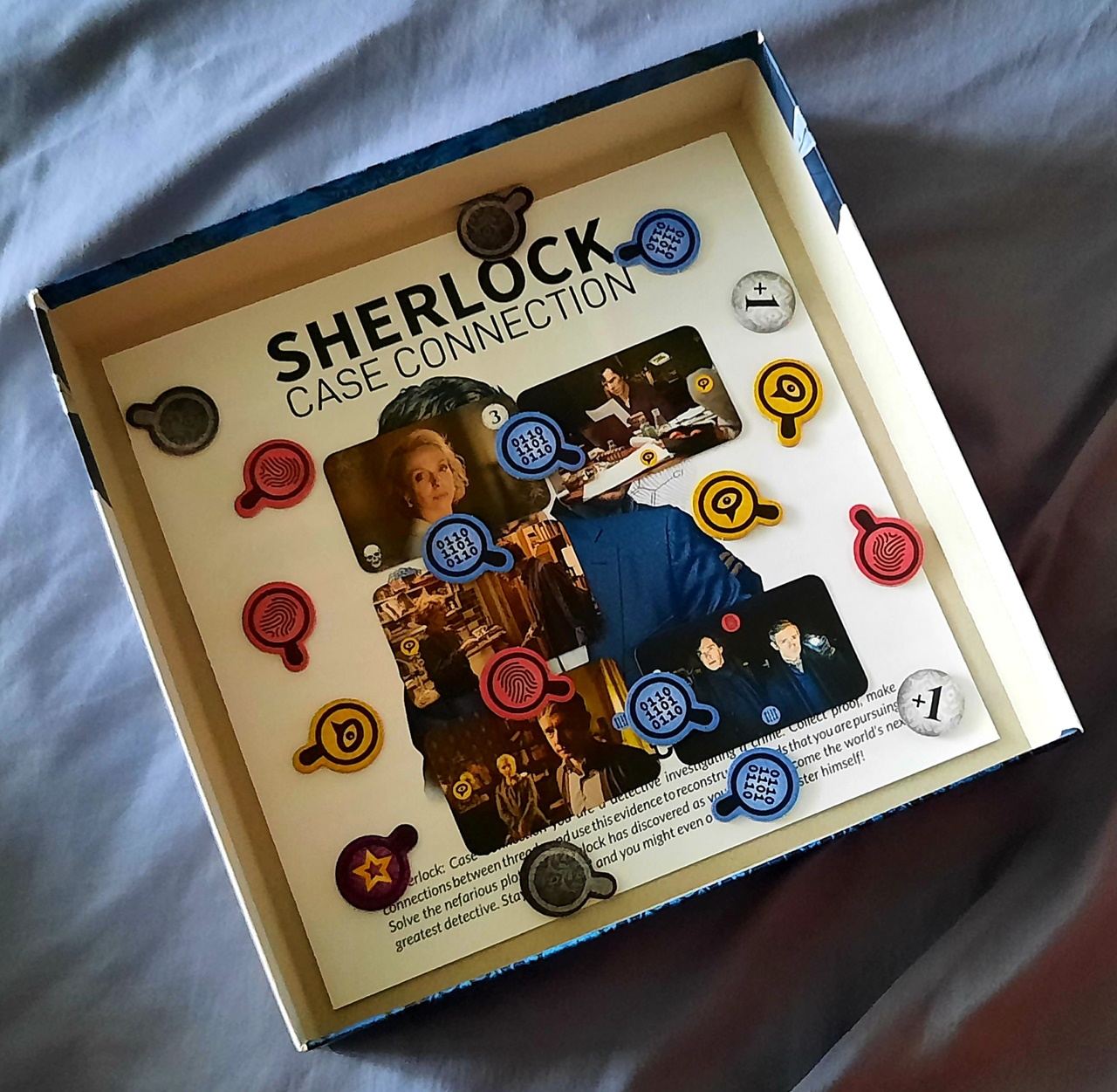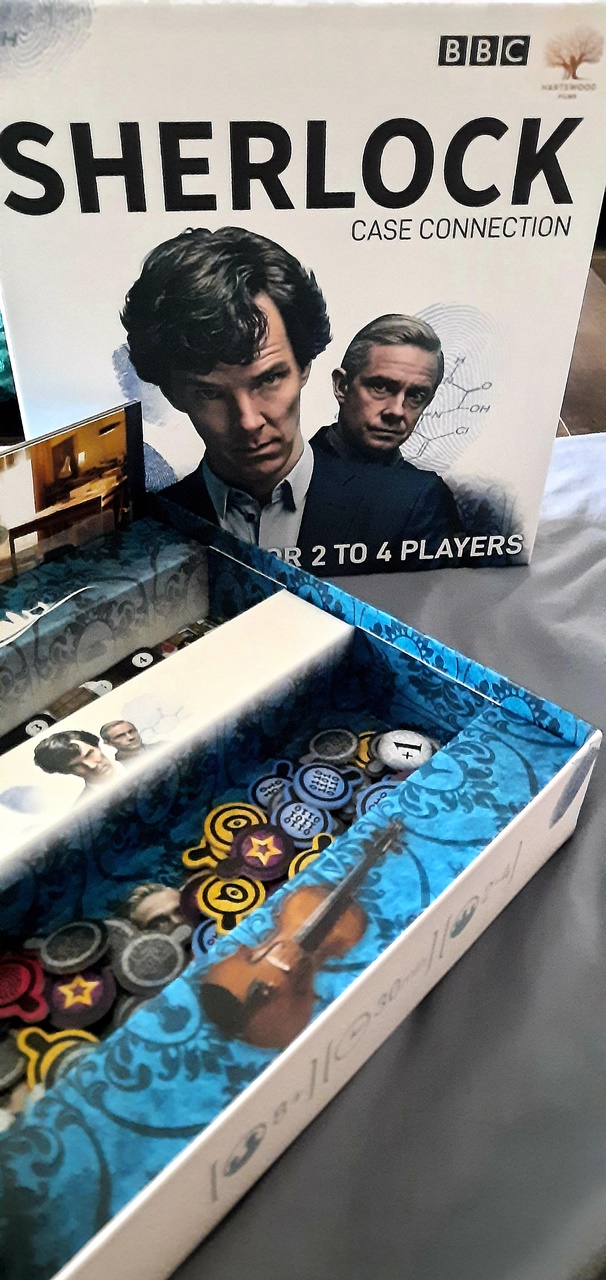Detectives in action
In the game, we play the role of detectives solving criminal cases. In order to catch the perpetrator, we must combine the evidence and clues discovered by Sherlock Holmes. Following in the footsteps of the master of puzzles, we can work out the villains’ plans, but – contrary to expectations – it will not be so easy.
In the box you will find instructions in English *, 20 case cards, 44 lead cards, 4 location boards, 13 digital evidence tokens, 13 interrogation evidence tokens, 13 forensic evidence tokens, and 8 universal evidence tokens. Before we start the game, we need to place all location boards in the center of the game area, and at the same time shuffle the evidence tokens: forensic, interrogation, and digital evidence (it will be one pool of evidence). Place the universal evidence tokens and the bonus point tokens near the play area. In addition, we must shuffle the lead cards and place them in a facedown deck next to the play area. The case cards are also shuffled and placed in a facedown deck next to the lead cards.
The final stage of setup for the game is that each player draws 2 case cards. Keep one of them and place the other at the bottom of the case deck. We put the chosen card face up in front of us. Next to it, we will place lead cards and evidence tokens. The game starts with the player who recently watched Sherlock or a randomly selected person.

The course of the game
During the game, we earn points for closed criminal cases, i.e. connecting evidence tokens with lead cards. Some of the latter give extra points or other bonuses (as long as we can link them to the case). We choose when we need it. If we do not have a matching card, we can choose a different symbol and try to create another connection. And, I will not surprise you here, you will finally succeed! As it is easy to notice, the game is based primarily on matching elements, unfortunately there are no puzzles that mobilize us to think more deeply about our actions, and even the atmosphere (characteristic of criminal cases) – elements so important in logical games and in line with the detective concept. One reason could be that the minimum player age is 8 years.
The end is coming soon (we should finish the game within 30 minutes. This happens when one of the players scores at least 9 points. Each of the other players plays one more turn and the points are scored. Also, the possibility of breaking the tie is worth mentioning: the player wins, who closed the case with the higher point value If there is still a tie, the player with the most closed cases wins.

A treat for fans of the series
Do you still remember the British TV series created by Steven Moffat and Mark Gatiss? Benedict Cumberbatch played the title role in the contemporary interpretation of Arthur Conan Doyle’s stories, and Martin Freeman played the role of Dr. Watson. The series won 9 Emmys, 15 other awards and 67 nominations. It is not surprising that, as part of the marketing strategy, a game was created with an inspiring title – Sherlock. Criminal puzzle . Apart from the illustrations (photos), the production lacks – as I mentioned – the atmosphere. Well, if you changed the title and layout, no one would have realized what the BBC’s proposal might be.
To sum up, Sherlock: Mystery Puzzle is a light game to be played with family or friends (2-4 players, 15-30 minutes). It can be appreciated for its replayability (the multitude of cases and the variability of the arrangement of elements on the location boards), but for more demanding players it will not be enough to appreciate it. I can assure you that the winner will be someone who is just lucky, not the best detective.
* You can download the Polish language version of the game here .

